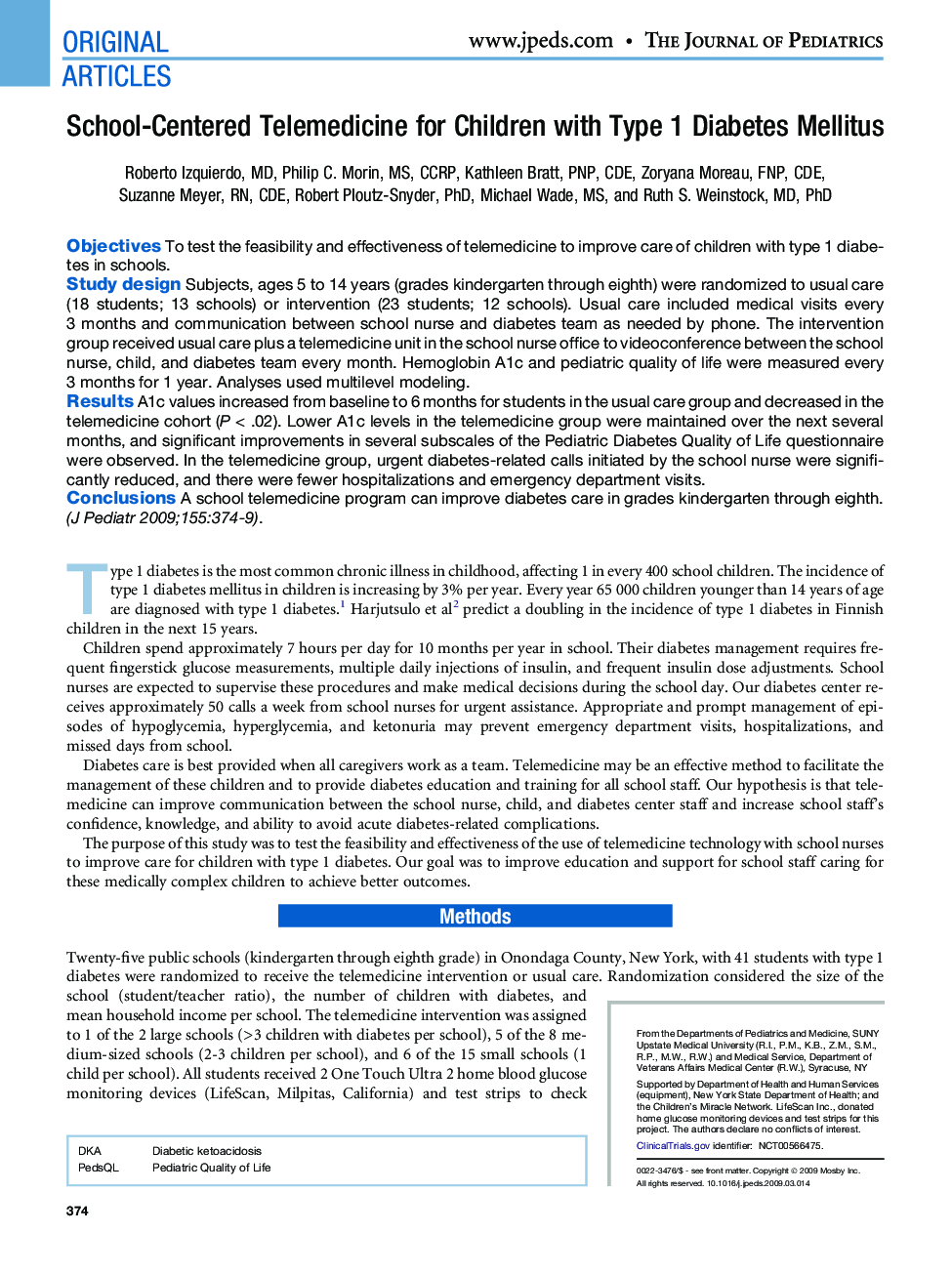| Article ID | Journal | Published Year | Pages | File Type |
|---|---|---|---|---|
| 4166348 | The Journal of Pediatrics | 2009 | 6 Pages |
ObjectivesTo test the feasibility and effectiveness of telemedicine to improve care of children with type 1 diabetes in schools.Study designSubjects, ages 5 to 14 years (grades kindergarten through eighth) were randomized to usual care (18 students; 13 schools) or intervention (23 students; 12 schools). Usual care included medical visits every 3 months and communication between school nurse and diabetes team as needed by phone. The intervention group received usual care plus a telemedicine unit in the school nurse office to videoconference between the school nurse, child, and diabetes team every month. Hemoglobin A1c and pediatric quality of life were measured every 3 months for 1 year. Analyses used multilevel modeling.ResultsA1c values increased from baseline to 6 months for students in the usual care group and decreased in the telemedicine cohort (P < .02). Lower A1c levels in the telemedicine group were maintained over the next several months, and significant improvements in several subscales of the Pediatric Diabetes Quality of Life questionnaire were observed. In the telemedicine group, urgent diabetes-related calls initiated by the school nurse were significantly reduced, and there were fewer hospitalizations and emergency department visits.ConclusionsA school telemedicine program can improve diabetes care in grades kindergarten through eighth.
